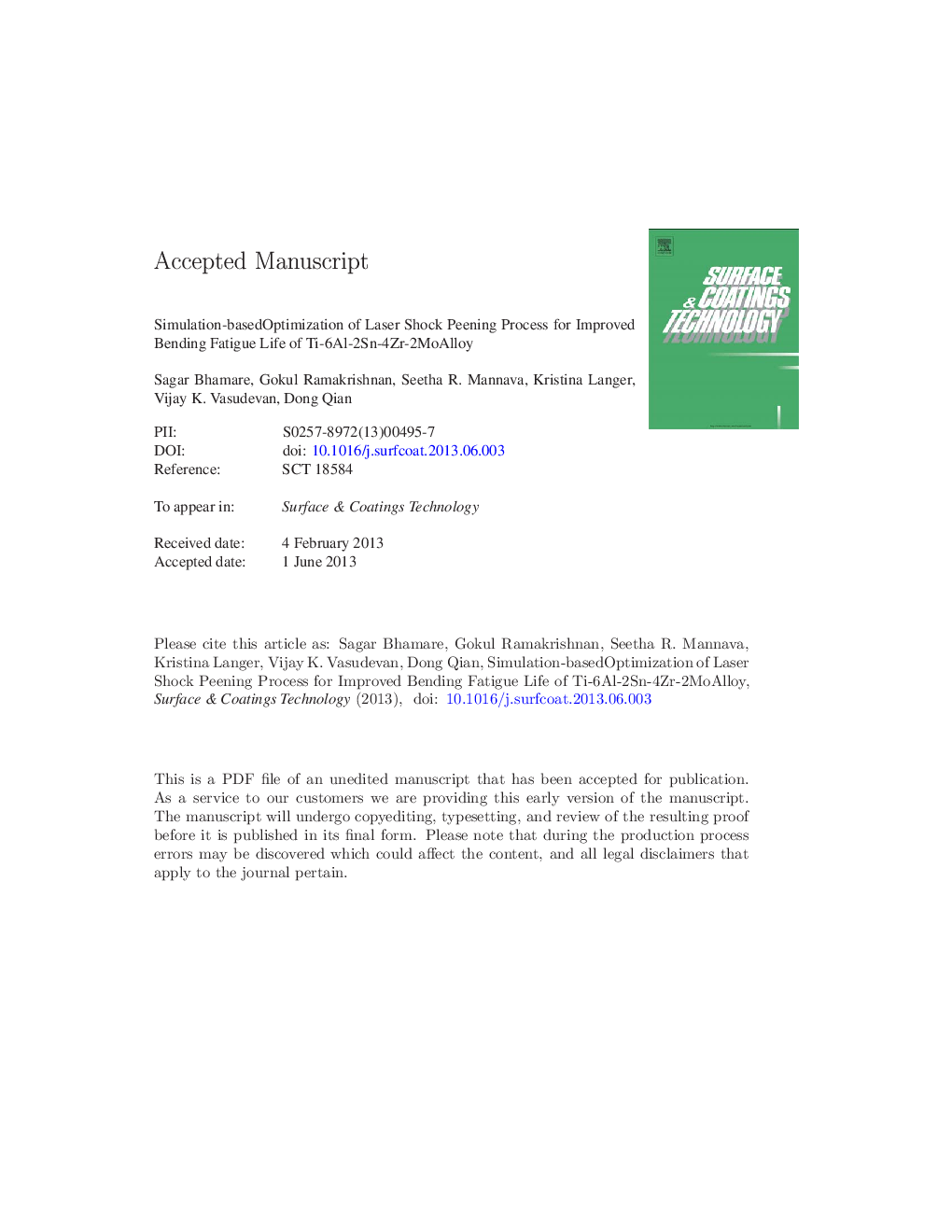| Article ID | Journal | Published Year | Pages | File Type |
|---|---|---|---|---|
| 8029581 | Surface and Coatings Technology | 2013 | 36 Pages |
Abstract
Laser shock peening (LSP) induced residual stresses significantly affect the high cycle fatigue behavior of certain metals and alloys. Residual stress distribution is a function of various laser parameters (energy, laser pulse width, and spot diameter), the geometry, the material and the laser shot sequencing. Considering the wide range of parameters involved in the LSP process, a numerical approach based on 3D nonlinear finite element method has been employed to explore the relation between the processing parameters and the residual stress distribution. This methodology is applied to a thin coupon of Ti-6Al-2Sn-4Zr-2Mo (Ti-6242) alloy, with a view towards establishing conditions for obtaining through-thickness compressive residual stresses and hence improved bending fatigue life. Material response at very high strain rates in the LSP process is effectively represented using the modified Zerilli-Armstrong material model. The numerical approach is verified by comparison with the experimental results. Effects of laser parameters and laser shot sequencing on final residual stress distribution are studied by performing full scale simulations of LSP patches constituting a large number of laser shots. Based on simulation studies, optimal set of parameters is obtained that produces through thickness compression, which leads to a substantial improvement in bending fatigue life. Fatigue testing results support the recommendations made based on simulation results.
Related Topics
Physical Sciences and Engineering
Materials Science
Nanotechnology
Authors
Sagar Bhamare, Gokul Ramakrishnan, Seetha R. Mannava, Kristina Langer, Vijay K. Vasudevan, Dong Qian,
